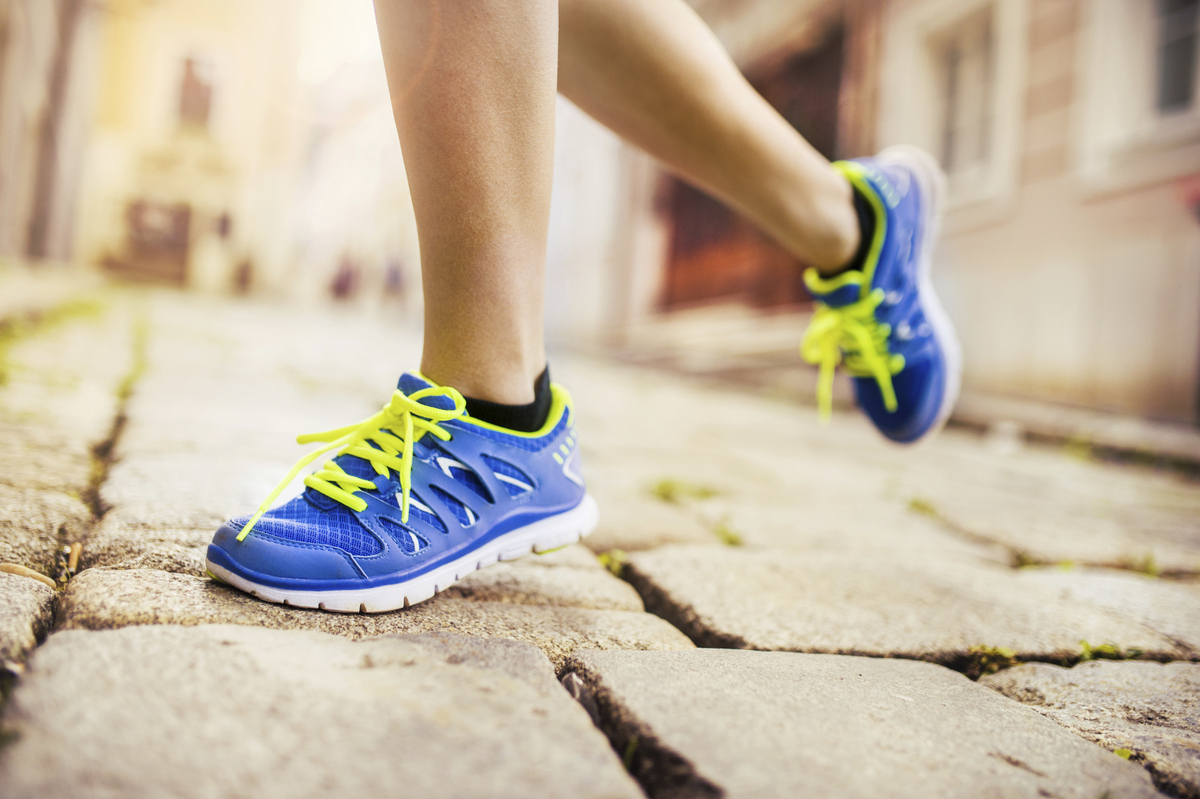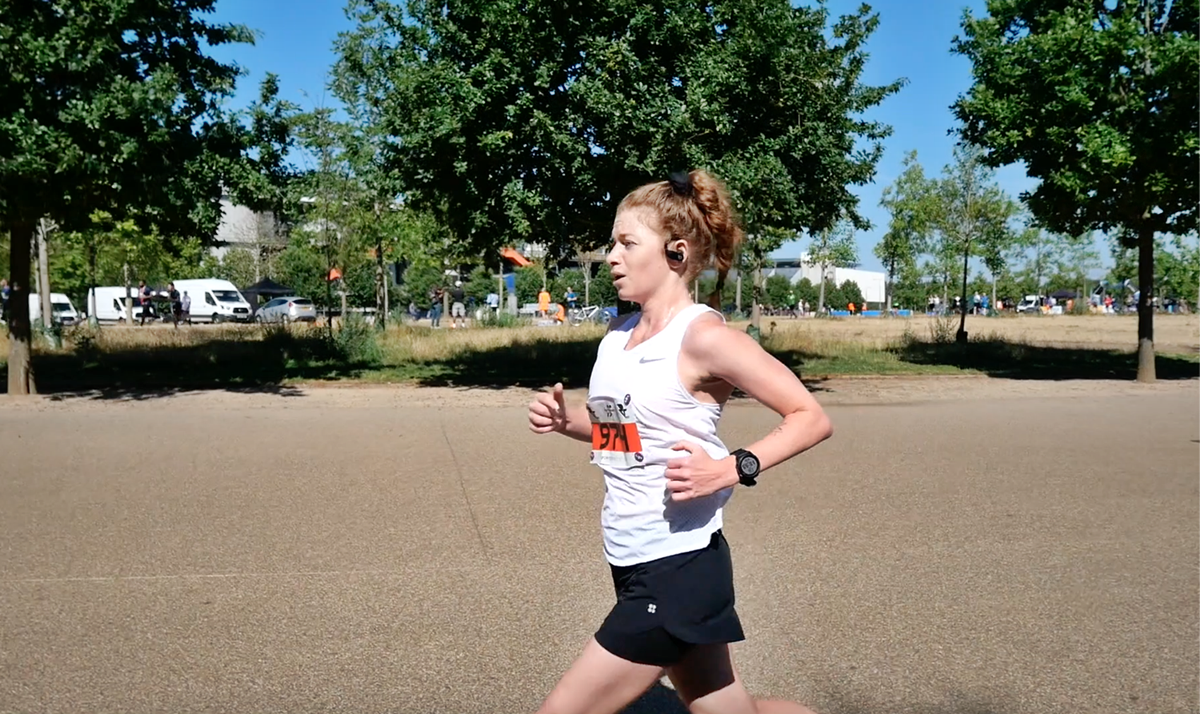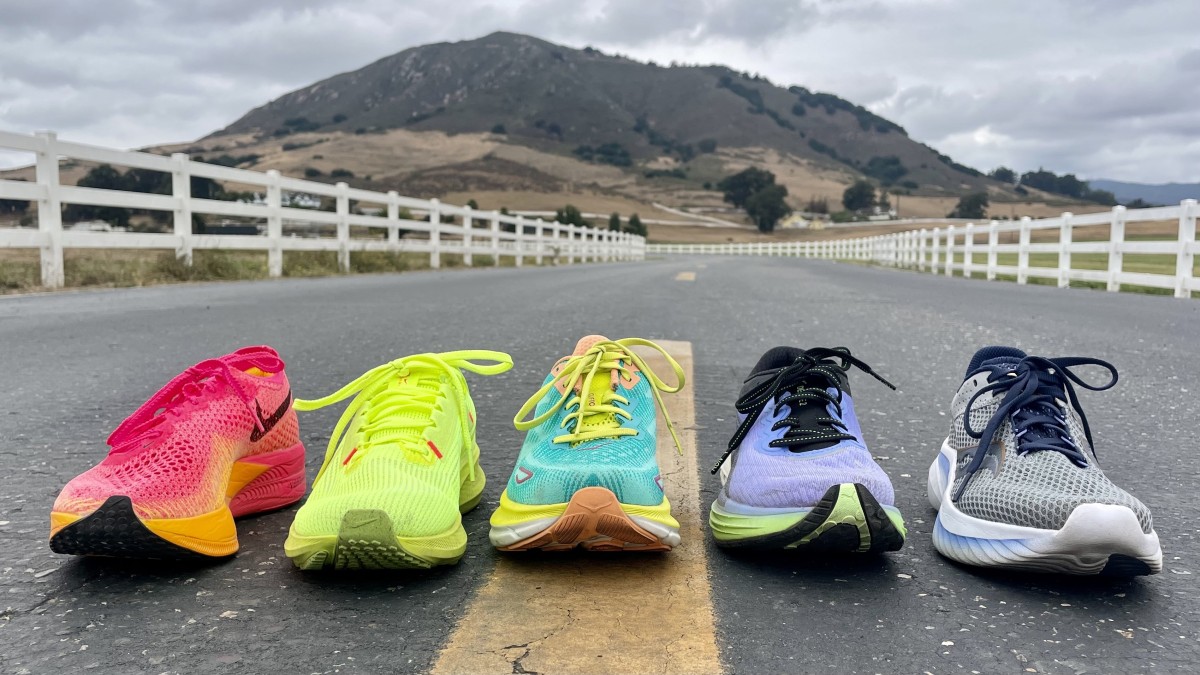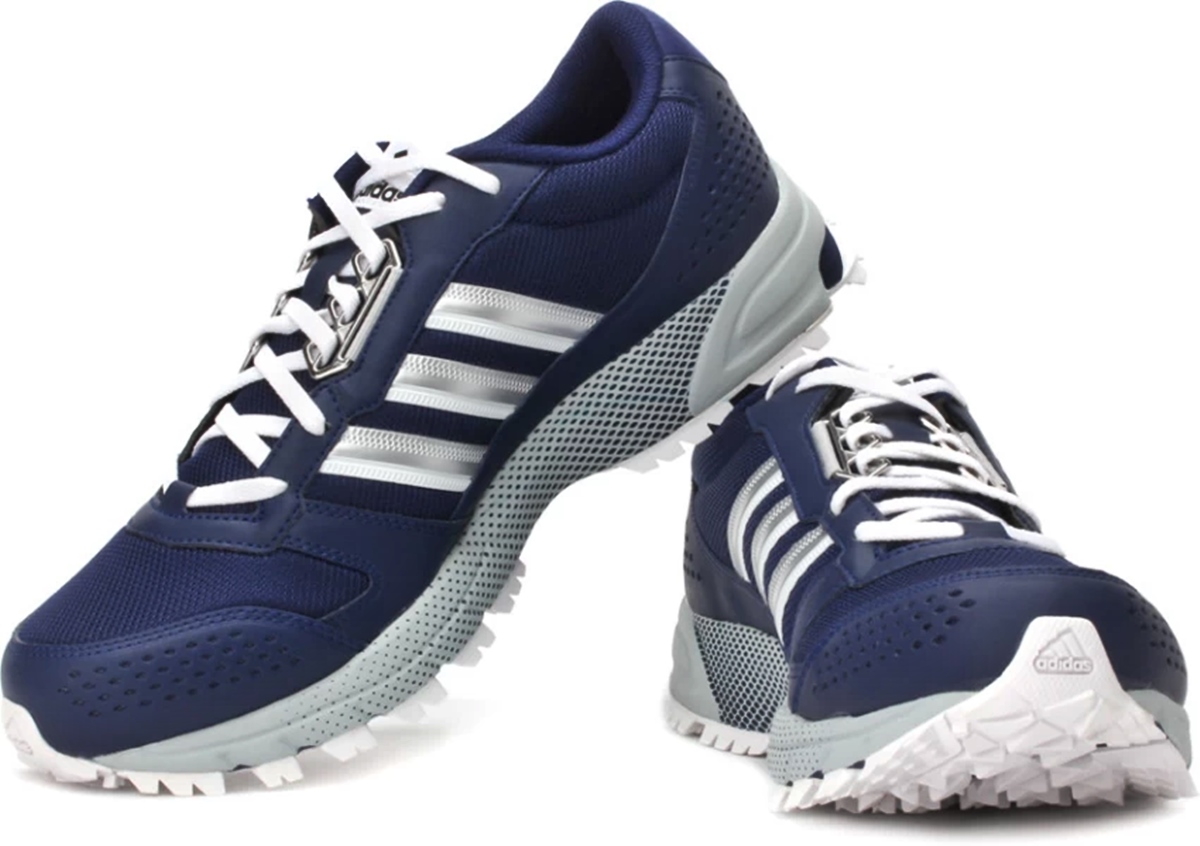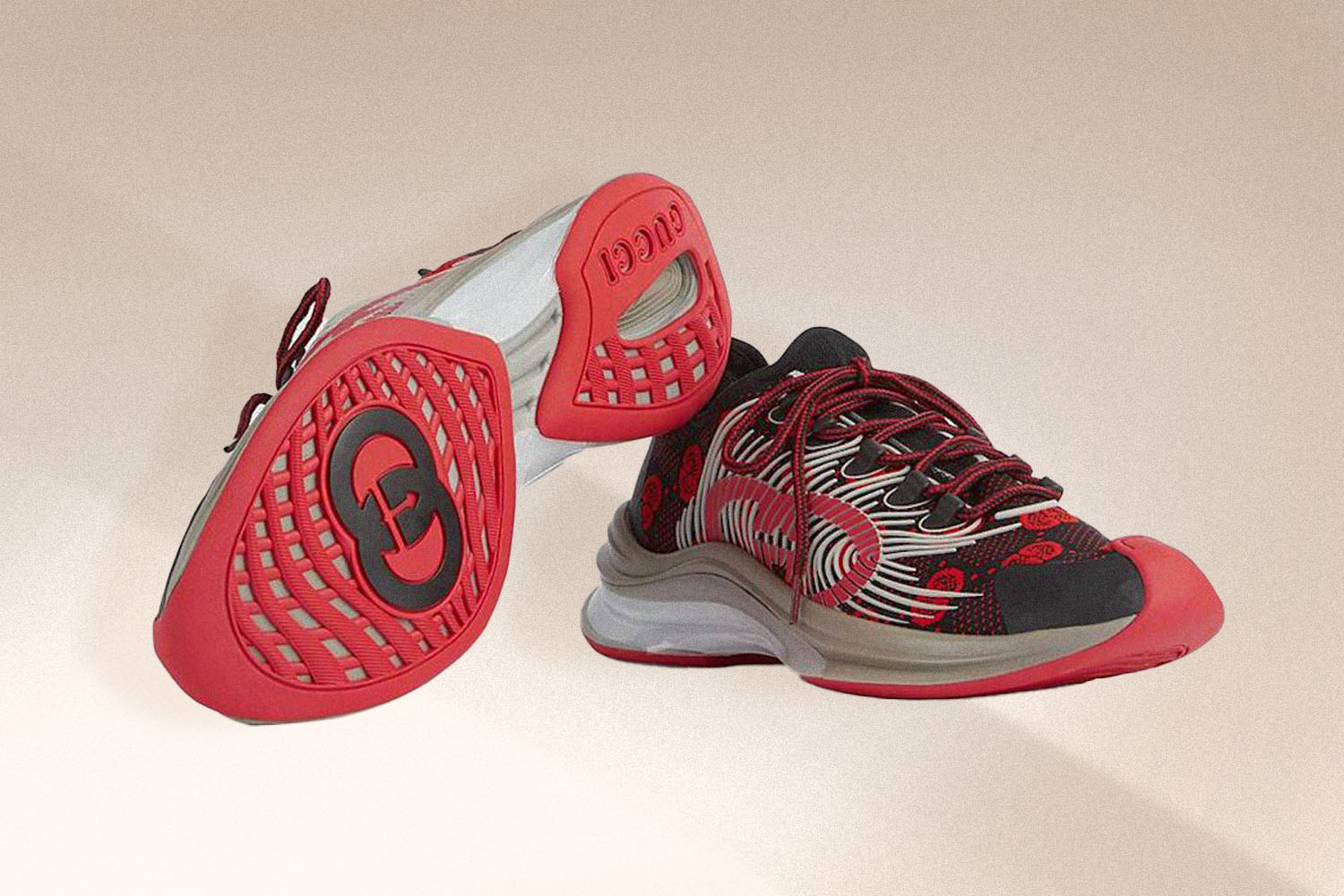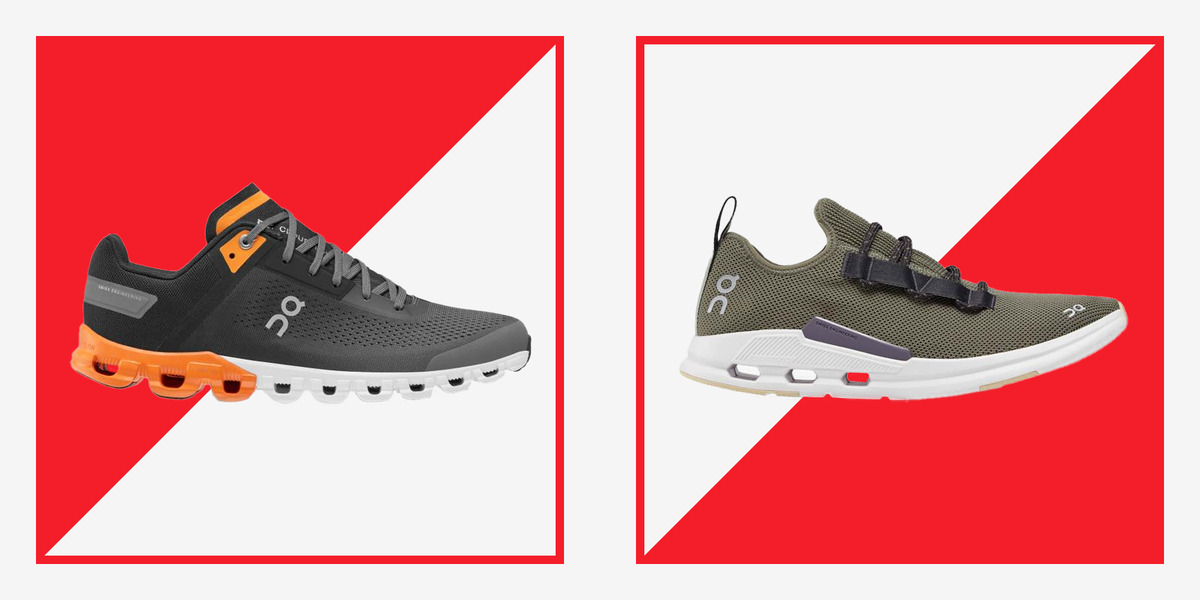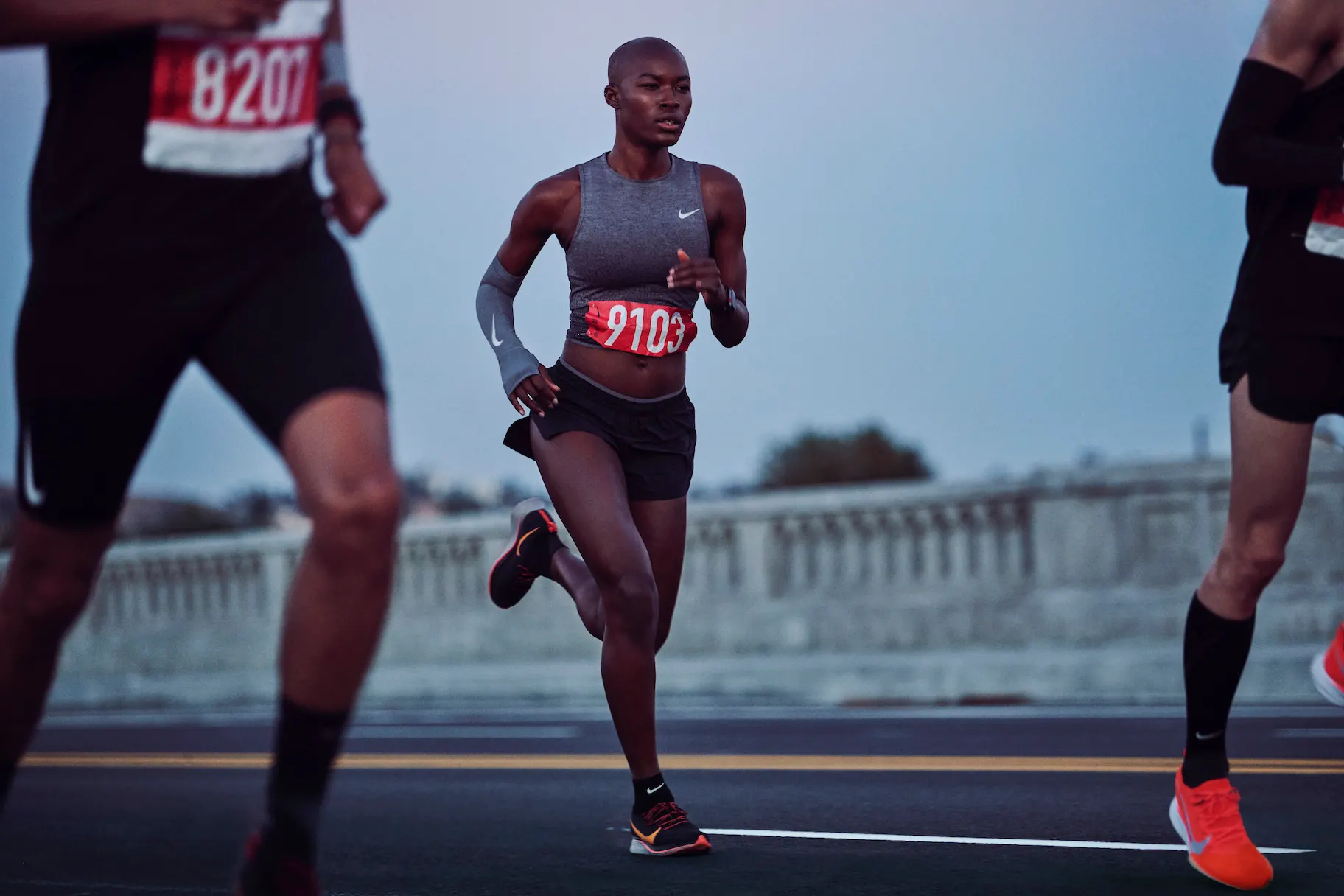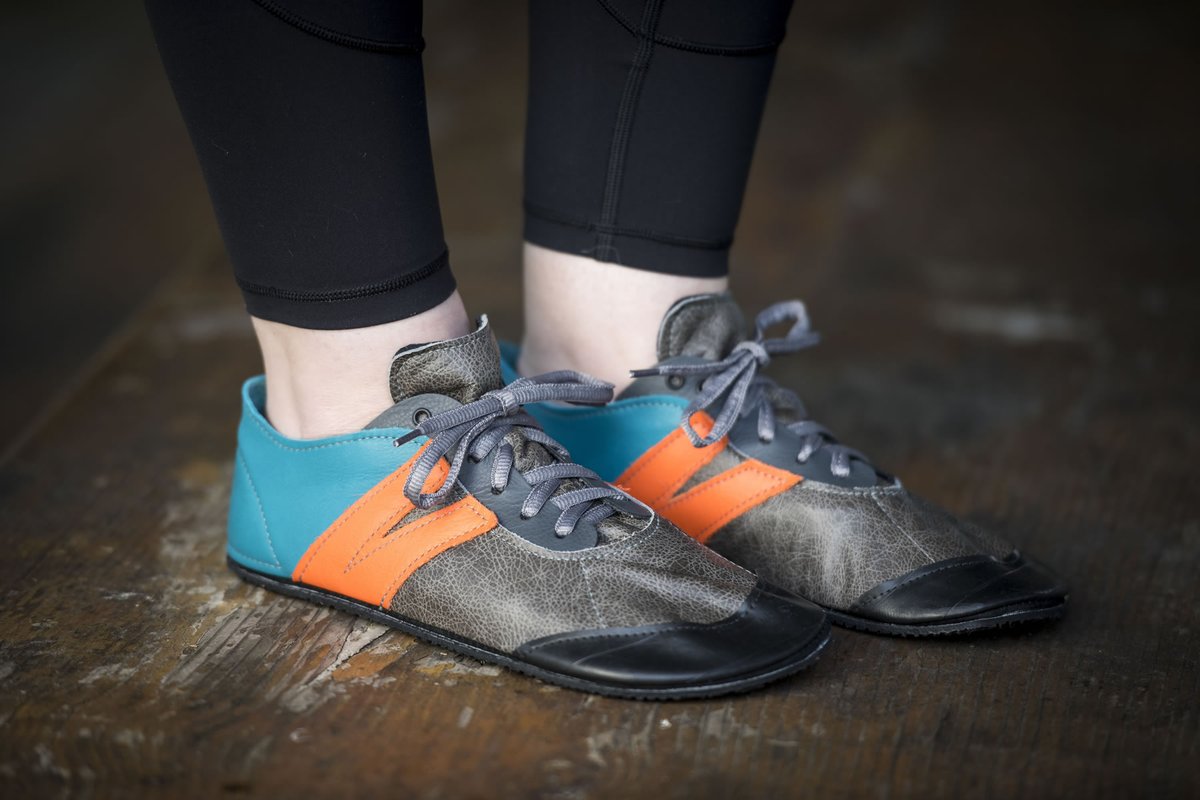Home>Misc>Featured>What Shoes Are Good For Long Distance Running


Featured
What Shoes Are Good For Long Distance Running
Modified: January 22, 2024
Looking for the best shoes for long distance running? Check out our featured collection for ultimate comfort and support during your workouts.
Introduction
Welcome to the world of long-distance running! Whether you are a seasoned marathoner or just starting out on your running journey, one thing is for certain – having the right shoes will significantly impact your performance and overall experience. Choosing the right footwear for long distance running is not a decision to be taken lightly, as it can make or break your running journey.
Long distance running puts a great amount of stress on your feet, legs, and joints. Without proper footwear, you risk facing discomfort, pain, and even serious injuries. On the other hand, selecting the right shoes can enhance your running efficiency, reduce the risk of injury, and provide you with the necessary support and comfort to go the distance.
In this article, we will delve into the importance of choosing the right shoes for long distance running and explore the key factors you should consider when selecting your running footwear. We will discuss the significance of cushioning, support, breathability, flexibility, stability, motion control, durability, and traction. Additionally, we will provide recommendations for some of the top long distance running shoes in the market today.
Whether you are aiming to conquer your first marathon, improve your personal best, or simply enjoy prolonged runs without discomfort, this article will serve as your guide to finding the perfect shoes for your long distance running adventures.
Importance of Choosing the Right Shoes for Long Distance Running
When it comes to long distance running, the importance of choosing the right shoes cannot be overstated. Your feet are the foundation of your running stride, and having the proper support and cushioning can significantly impact your performance and prevent injuries.
First and foremost, wearing the right shoes for long distance running helps to provide the necessary cushioning and support to absorb the impact of each stride. Running puts a tremendous amount of stress on your feet and joints, and without adequate cushioning, you may experience discomfort, pain, and even develop conditions such as stress fractures or plantar fasciitis.
In addition to cushioning, the right shoes also provide support to your arches and ankles. Long distance running requires stability and proper foot alignment, and investing in shoes that offer the right level of support can help prevent overpronation, underpronation, and other issues that may lead to injuries.
Breathability and flexibility are two other crucial factors to consider when selecting long distance running shoes. Your feet will naturally sweat during a run, and without proper ventilation, you may experience blistering, discomfort, and an increased risk of fungal infections. Look for shoes that have breathable uppers and moisture-wicking materials to ensure your feet stay cool and dry throughout your run. Additionally, flexibility is important to allow for a natural range of motion and prevent restrictions that could affect your stride efficiency.
Stability and motion control should also be taken into account, especially if you have specific biomechanical issues or are prone to overpronation or supination. Shoes with stability features or motion control technologies can help correct your gait and provide added stability during your runs.
Durability and traction are other essential aspects to consider. Long distance running can put a significant amount of wear and tear on your shoes, so investing in durable footwear ensures they will hold up over time. Additionally, having good traction is crucial, especially if you run on various terrains. Shoes with reliable grip help prevent slips and falls, keeping you safe and confident on your runs.
Overall, choosing the right shoes for long distance running is of utmost importance for both performance and injury prevention. Taking the time to find the right pair that offers cushioning, support, breathability, flexibility, stability, motion control, durability, and traction will greatly enhance your running experience and help you reach your running goals.
Factors to Consider When Selecting Long Distance Running Shoes
When choosing long distance running shoes, there are several important factors to consider to ensure you find the perfect fit for your needs. These factors will help you determine which shoes will provide the necessary comfort, support, and durability for your long runs. Let’s explore them in detail:
- Foot Type and Pronation: Understanding your foot type and pronation is crucial in finding the right shoes. There are three main foot types – neutral, overpronated, and underpronated (supinated). Depending on your foot type, you may need shoes with specific features to provide the appropriate support and stability.
- Cushioning and Support: The level of cushioning and support you require will depend on your running style and personal preference. Some runners prefer more cushioning for shock absorption, while others prefer a firmer, more responsive feel. Additionally, consider the support features such as arch support or stability technologies that can help prevent pronation issues.
- Breathability and Flexibility: Look for shoes with breathable materials and ventilation features to allow air to circulate and keep your feet cool and dry. Flexibility is also crucial, as it allows for a natural range of motion and prevents restriction of movement.
- Weight: The weight of the shoe can impact your running performance, especially during long distance runs. Lighter shoes can provide a more efficient and responsive feel, while heavier shoes may offer more durability and support. Consider your running goals and personal preferences when choosing the weight of your shoes.
- Drop: The drop, or heel-to-toe offset, refers to the height difference between the heel and forefoot of the shoe. Different drops can influence the running mechanics and feel. Higher drops may encourage heel striking, while lower drops promote a more natural midfoot or forefoot strike. Consider your preferred running style and comfort when choosing the drop of your shoes.
- Fit: Finding the right fit is crucial for long distance running. Shoes that are too small or too big can cause discomfort, blisters, and even toenail issues. Ensure there is enough toe room, a snug heel fit, and no tight spots or pinching in the shoe. It is recommended to try on shoes and walk or run in them to assess the fit properly.
By considering these factors, you will be able to narrow down your options and find the ideal long distance running shoes that meet your specific needs and preferences. Remember, each runner is unique, so what works for someone else may not necessarily work for you. Take the time to do your research, try on different shoes, and listen to your body to find the perfect pair that will support you on your long distance running endeavors.
Cushioning and Support
Cushioning and support are two crucial factors to consider when selecting long distance running shoes. The right amount of cushioning will help absorb the impact of each stride, providing comfort and protecting your feet and joints from excessive stress. Support, on the other hand, is essential for maintaining proper foot alignment and preventing overpronation or underpronation.
When it comes to cushioning, there are different levels to choose from. Some runners prefer maximum cushioning, which provides a soft and plush feel underfoot. This type of cushioning is beneficial for runners who prioritize shock absorption and want to minimize the impact on their joints. Others may prefer a more moderate level of cushioning, which offers a balance between comfort and responsiveness. This level of cushioning is suitable for runners who want a slightly firmer feel with good energy return.
Support is equally important, especially for runners with specific foot types or pronation issues. Overpronation occurs when your foot rolls excessively inward, leading to potential injuries such as plantar fasciitis or shin splints. In this case, choosing shoes with stability features, such as a medial post or arch support, can help correct your gait and provide the necessary support to prevent overpronation.
On the other hand, underpronation (supination) happens when your foot rolls outward, which can lead to issues like ankle sprains or stress fractures. Runners with underpronation may benefit from shoes with neutral cushioning and a flexible midsole to allow for a more natural foot movement.
It is important to note that cushioning and support needs are subjective and vary from runner to runner. Factors such as body weight, running style, and personal preference will influence the amount of cushioning and support you require.
When trying on different shoes, pay attention to how they feel underfoot. Do they provide enough cushioning for your comfort level? Do they offer the necessary support to keep your feet in an aligned position? It is also recommended to take them for a short test run to gauge their performance.
Ultimately, finding the right balance of cushioning and support is essential for long distance running. Too little cushioning can lead to discomfort and potential injuries, while too much cushioning may sacrifice responsiveness and energy return. Pairing the appropriate cushioning level with the right amount of support will help you enjoy a comfortable and injury-free long distance running experience.
Breathability and Flexibility
When it comes to long distance running, breathability and flexibility are two essential factors to consider when selecting running shoes. These features play a significant role in ensuring your feet stay comfortable, cool, and dry throughout your runs, while also allowing for a natural range of motion.
Breathable shoes are designed with materials and construction techniques that allow air to circulate around your feet, preventing excessive heat and moisture buildup. When you run, your feet naturally sweat, and without proper ventilation, this can lead to discomfort, blisters, and even fungal infections. Breathable uppers, mesh panels, and moisture-wicking materials are common features found in running shoes that enhance airflow and help keep your feet dry.
Flexibility is equally important to consider. It refers to the shoe’s ability to bend and move with your foot as you run. A shoe with good flexibility allows for a natural range of motion, mimicking the movement of your foot. This is important because it prevents restrictions that can affect your running gait and potentially lead to discomfort or injuries. Look for shoes that have flexible midsoles and outsoles to ensure smooth and unrestricted movement.
When trying on running shoes, pay attention to how well they breathe and how they flex. Take a close look at the upper materials and see if they have any ventilation features or mesh panels that can enhance airflow. Consider the overall breathability of the shoe to ensure your feet stay cool and dry, especially during longer runs.
To assess the flexibility of the shoe, try performing some simple bending tests. Gently bend the shoe at the toe and heel and observe how it responds. It should easily flex and return to its original shape. This flexibility allows for a more natural foot movement and a more efficient stride.
Keep in mind that breathability and flexibility preferences may vary from runner to runner. Some people naturally have warmer or more sweat-prone feet and may prioritize breathability more than others. Similarly, some runners prefer a more flexible shoe to allow for a greater range of motion, while others may prefer a slightly stiffer shoe for added stability.
By considering the breathability and flexibility of your running shoes, you can ensure maximum comfort and performance during your long distance runs. Shoes that allow your feet to breathe and move naturally will keep you feeling fresh, prevent overheating, and minimize the risk of discomfort or blisters.
Stability and Motion Control
Stability and motion control are two critical factors to consider when selecting long distance running shoes, especially if you have specific biomechanical issues or are prone to overpronation or supination. These features provide the necessary support and alignment to maintain proper foot motion and prevent potential injuries.
Overpronation occurs when your foot rolls excessively inward during the running gait, leading to an unstable foot position. This can put additional stress on the arches and increase the risk of injuries such as plantar fasciitis, shin splints, or knee pain. If you are an overpronator, it is essential to look for shoes that provide stability features to help correct your gait and keep your foot in a more neutral position.
Stability shoes typically feature a medial post, a firmer section of the midsole on the inner side of the shoe. This post helps limit the inward rolling motion of the foot, providing the necessary support and preventing excessive pronation. By choosing stability shoes, you can maintain better alignment, reduce the risk of injuries, and enhance running efficiency.
On the other hand, supination, or underpronation, occurs when your foot rolls outward during the running gait. This can lead to issues such as ankle sprains, stress fractures, or iliotibial band syndrome. Runners with supination may benefit from shoes with neutral cushioning and a more flexible midsole that allows for a more natural foot motion and encourages a proper stride.
To determine your pronation pattern, you can visit a specialty running store or consult a sports podiatrist who can assess your gait and provide expert guidance on the type of shoes that best suit your needs.
It is important to note that not all runners require stability or motion control shoes. Neutral runners, who have a more natural foot motion without excessive pronation or supination, may not need these features. However, if you have a history of pronation issues or any biomechanical concerns, ensuring your shoes offer stability and motion control is crucial.
When trying on running shoes, pay attention to how they feel in terms of stability. Check for a firm midsole and support features specifically designed to address pronation issues. Walk or run in the shoes to ensure they provide the necessary control and alignment for your feet.
By selecting running shoes with the appropriate stability and motion control features, you can minimize the risk of overpronation or supination related injuries and maintain a more efficient and comfortable running stride.
Durability and Traction
When selecting long distance running shoes, durability and traction are two important factors to consider. These features are essential for ensuring that your shoes can withstand the demands of high mileage running and provide a secure grip on various terrains.
Long distance running puts a significant amount of wear and tear on your shoes. The constant pounding on the pavement, trail surfaces, or any other running terrain can gradually wear down the components of the shoe. Investing in durable running shoes is crucial to ensure they can withstand the rigors of long distance running and provide you with long-lasting performance.
Look for shoes that have sturdy construction and high-quality materials, particularly in high-wear areas such as the outsole and upper. Reinforced toe caps and overlays can help protect the shoe from abrasion and contribute to its longevity. Additionally, pay attention to customer reviews and feedback to gauge the durability of a particular shoe model.
Traction is equally important, especially if you often run on uneven or slippery surfaces. Good traction ensures that your shoes provide a secure grip and prevent slips and falls. The outsole of the shoe plays a crucial role in this aspect, with different tread patterns and materials offering varying levels of traction.
When trying on running shoes, examine the outsole and the grip it provides. Look for multidirectional lugs or patterns that can provide traction on different surfaces. Consider the type of terrain you will be running on most frequently and choose a shoe that offers the appropriate level of traction for those conditions.
It’s worth noting that while durability and traction are important, they can sometimes come at the expense of other factors such as weight or flexibility. Finding a balance between these features is crucial, as excessively heavy or rigid shoes may hinder your running experience.
Maintaining the durability and traction of your running shoes requires proper care and maintenance. Rotate between multiple pairs of shoes to allow them to recover and extend their lifespan. Keep them clean and dry, especially after running in wet conditions, to prevent the growth of bacteria or mold that could damage the shoe over time.
By considering the durability and traction of your long distance running shoes, you can ensure that they are capable of enduring the demands of your training and races while providing the necessary stability and grip to keep you safe and confident on any terrain.
Finding the Right Fit
One of the most critical factors in selecting long distance running shoes is finding the right fit. The perfect fit ensures optimal comfort, prevents discomfort and injuries, and allows you to perform at your best. Here are some key considerations to keep in mind when searching for the right fit:
Toe Room: Make sure there is enough space in the toe box to wiggle your toes comfortably. Your toes should not feel cramped or compressed, as this can lead to blisters, black toenails, and other issues during long distance runs.
Snug Heel Fit: Check that your heel sits securely in the shoe without slipping. A loose heel fit can lead to friction, blisters, and instability. On the other hand, avoid shoes that feel too tight or restrictive around the heel, as this can cause discomfort and potentially aggravate Achilles tendon issues.
No Tight Spots: As you try on different shoes, pay attention to any areas that feel tight or pinch your feet. Pressure points or tight spots can lead to hot spots, blisters, or discomfort during long runs. Look for shoes that provide a uniform and comfortable fit throughout.
Try On and Test: It is highly recommended to try on running shoes and take them for a short run or walk before making a final decision. This allows you to assess how they feel in motion and how they respond to your specific foot and running style.
Consider Sizing: Keep in mind that shoe sizing can vary between brands and models. Don’t rely solely on your usual shoe size as a basis for selecting running shoes. Take into account the specific measurements and sizing recommendations provided by the manufacturer or retailer.
Seek Professional Advice: If you have particular foot conditions or concerns, it can be helpful to consult a professional, such as a podiatrist or a knowledgeable salesperson at a specialty running store. They can assess your feet and provide expert advice on the type of shoes that will best suit your needs.
Remember that finding the right fit is a personalized process, and what works for one runner may not work for another. Each person’s feet and running mechanics are unique, so take the time to find the shoes that feel the most comfortable and supportive for you.
Investing in the right fit will greatly enhance your long distance running experience, keeping you free from discomfort, reducing the risk of injuries, and allowing you to enjoy every mile of your runs.
Recommendations for Long Distance Running Shoes
With a plethora of running shoe options available in the market, finding the perfect pair for long distance running can be overwhelming. To make your search easier, here are some top recommendations for long distance running shoes that have received positive reviews from runners:
- Nike ZoomX Vaporfly Next%: Known for its exceptional energy return and comfort, the Vaporfly Next% is a popular choice among elite and recreational runners alike. It features Nike’s innovative ZoomX foam and a carbon fiber plate to provide a responsive and propulsive ride.
- Brooks Ghost 14: The Ghost series from Brooks has long been favored by runners for its balanced cushioning, versatility, and excellent fit. The Ghost 14 offers a smooth and comfortable ride, with lightweight cushioning that absorbs impact without sacrificing responsiveness.
- ASICS Gel-Nimbus 24: ASICS Gel-Nimbus is a long-standing favorite for long distance running. The Gel-Nimbus 24 provides ample cushioning, excellent shock absorption, and a secure fit. It is known for its durability and superior comfort, making it a reliable option for marathon training and long runs.
- Hoka One One Clifton 8: Hoka One One shoes are renowned for their maximal cushioning and lightweight construction. The Clifton 8 continues the tradition with its plush cushioning, responsive ride, and wider toe box for added comfort. It is a great option for runners seeking exceptional cushioning without excessive weight.
- New Balance Fresh Foam 1080v11: The Fresh Foam 1080v11 offers a luxurious and responsive cushioning experience. With its plush Fresh Foam midsole and a roomy toe box, the 1080v11 provides excellent comfort on long distance runs while ensuring a secure fit.
It’s important to note that these recommendations are just a starting point, and individual preferences play a significant role in finding the perfect fit. What works for one runner may not work for another. Ensure that you try on different models, consider your specific needs and foot characteristics, and seek professional advice if necessary.
Additionally, always keep in mind that shoes have a lifespan and will need to be replaced after certain mileage or wear. Pay attention to the wear patterns on the outsole and midsole, and be mindful of any discomfort or loss of support that may indicate it is time for a new pair.
Remember, selecting the right long distance running shoes is a personal journey. Take the time to find the pair that fits you well, provides the necessary cushioning and support, and offers the comfort you need to conquer your long runs with confidence.
Conclusion
Choosing the right shoes for long distance running is an important decision that can greatly impact your performance, comfort, and overall running experience. From cushioning and support to breathability and flexibility, each factor plays a role in finding the perfect fit for your feet.
By considering factors such as your foot type, pronation, cushioning preferences, durability, traction, and fit, you can narrow down your options and find the ideal pair of long distance running shoes. Don’t be afraid to try on multiple pairs, seek professional advice when needed, and listen to your body’s needs and feedback.
Remember that finding the right shoes is a personal journey, and what works for one runner may not work for another. Each person’s feet and running mechanics are unique, so focus on finding shoes that provide the necessary comfort, support, and durability for your long distance journeys.
With the right shoes on your feet, you can minimize the risk of discomfort, injuries, and setbacks, allowing you to fully enjoy and excel in your long distance running pursuits. So lace up, hit the road or trail, and let your perfectly fitted shoes carry you to new distances and unforgettable running experiences.
